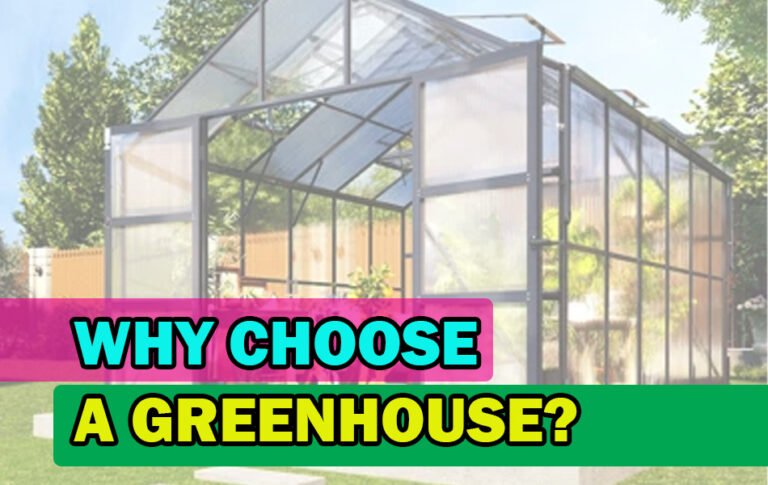Being curious is one thing, but understanding all the aspects of a greenhouse is often the selling point many people need before investing in their own. How long have greenhouses been used? How do they operate, and what are they? What do operational components like ventilation, lighting, and carbon dioxide enrichment add to your experience? What are all the benefits that you stand to gain from this structure sitting on your plot of land?
WHAT IS A GREENHOUSE?
A greenhouse is a structure with a roof made of glass, fiberglass, or plastic (which can either mimic glass or be in tarp-like sheets). Most times, the walls will be covered in the same material, also known as glazing. This glazing is supported by a frame made from aluminum, steel, wood, and sometimes plastic.
Heating in your greenhouse is mostly produced by natural sunlight, also known as solar radiation. The light comes through the glazing and begins warming the air and the interior surfaces, like plants, the ground, and other parts of the structure. That warm air is then kept in the building, and the heat that was absorbed by those surfaces is reradiated, which will be kept in the greenhouse because of the glazing.
Greenhouses protect plants from extreme heat and cold. They protect plants from dust storms and blizzards, and while you still have to monitor pests, greenhouses will ward off a lot of them.
What Are the Uses of a Greenhouse?
The effects of a greenhouse are often used for growing flowers, vegetables, fruits, and other plants. Things like flowers and vegetables often start their growth in a greenhouse earlier in the year and then move into an outdoor garden when the weather is suitable.
Commercial greenhouses are used for the mass production of plants, which is how major retailers are able to get their plants for the season. These are extremely high-tech structures that feel more like a lab than a garden. These greenhouses are becoming more important to certain regions of the world to provide produce in extreme conditions for rising populations.
These commercial structures allow light and temperature to be controlled, which can turn any land into an ideal land for plant growth. So, arctic regions and harsh deserts can turn into lush growing environments. Many of these greenhouses also use hydroponics, which eliminates the need for soil, opening up space for many plants to grow.
This commercial growth has found its way into more backyards as hobby greenhouses have grown in popularity. Niche retailers sell hobby greenhouses online, but because of the growing trend, many major retailers are also joining in by selling hobby greenhouse kits. While it seems like something relatively new, when exactly did greenhouses join the gardening world?
History of Greenhouses
The idea of greenhouses has existed for a very long time. In Roman times, Emperor Tiberius loved cucumbers so much that he never went without them because Roman gardeners used a primitive greenhouse system to grow cucumbers all year long. They would place the plants in wheeled carts to be rolled into the sun. Then, at night, they would take the carts inside and keep them warm. After harvest, they would store the cucumbers in another primitive greenhouse, which would be under frames with a glazing made of either oiled cloth (specularia) or sheets of mica.
It was in Italy during the sixteenth century when the first modern greenhouses were built. These structures were made to store the exotic plants that explorers would bring back with them; originally called botanical gardens, this concept would soon spread to other parts of the world as other countries were looking for ways to house the plants that wouldn’t typically survive. These ancient structures were massive, and it took a lot of work for them to operate properly, and even then, there were still many issues.
Charles Lucien Bonaparte, a French botanist, wanted a place to grow tropical plants for medicinal purposes, so he is often given credit for the first modern greenhouse that was practical.
This practical design, again, spread to other reaches of the world during the nineteenth century. Also developing during this time was iron and glass work. Iron and glass were being used to construct things like railway stations and exhibition halls, which were then applied to greenhouse construction. This made extremely large structures known as palm houses that were found in parks and public gardens. Because of the materials and sheer size of these greenhouses, they weren’t really available to the home gardener.
The twentieth century would see more advancements in greenhouse production. This saw the geodesic dome and pyramid designs added to many greenhouses. Around 1960, sheets of polyethylene became widely available, which made greenhouses even more adaptable.
Hoop houses also came into production that were made by companies or by growers on their own. Hoop houses are made with aluminum extrusions, steel tubing (or PVC), and polyethylene sheets for glazing. Because of this, production costs were drastically lowered, and small farms and garden centers could now use them. During the 1970s, the strength of the polyethylene sheets was greatly improved, which made these greenhouses a better economic decision.
During the 1980s and 1990s, gutter-connected greenhouses became more popular, and more improvements were made in general greenhouse design. Again, the better developed and more produced materials are, the lower the costs are without compromising the effectiveness. This led to more greenhouses being put into backyards and not just small farms or commercial greenhouses.

